Diving Deep into Costa Rica’s Underwater Paradise
By Silvanna Pacheco, January 31st, 2025
Costa Rica has coastlines stretching along both the Pacific Ocean and the Caribbean Sea harboring a breathtaking underwater world with an incredible variety of creatures and ecosystems.
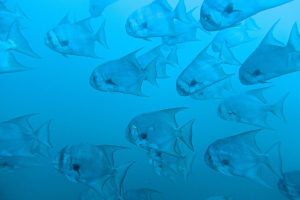
Costa Rica’s waters are a playground for a variety of marine life: playful dolphins, graceful manta rays and ancient sea turtles, including leatherbacks, greens, and olive ridleys, who come ashore to nest. Tortuguero National Park, a crucial nesting ground for green turtles, is a truly unforgettable sight.
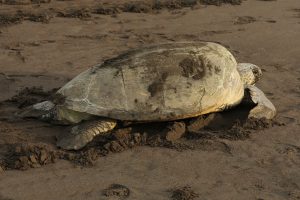
Accessible only by boat or small plane, Tortuguero National Park in northeastern Costa Rica exudes an aura of untouched wilderness. Its beaches serve as vital nesting grounds for several species, particularly the endangered green sea turtle, but also leatherback, hawksbill, and loggerhead turtles.
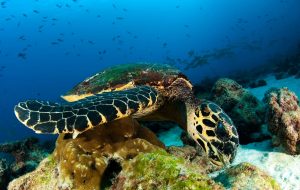
For the truly adventurous, there is Cocos Island National Park. This remote island located 550 km southwest of the Costa Rica mainland, is a UNESCO World Heritage Site and a world-renowned dive destination. Divers will enjoy their encounters with sharks, rays and the island’s famous hammerhead shark population. The newly established Monitoring, Control, and Surveillance Center of the Cocos Marine Conservation Area (ACMC) underscores Costa Rica’s dedication to protecting this underwater Eden. This cutting-edge facility is revolutionizing marine conservation and solidifying Costa Rica’s role as a leader in safeguarding its precious ocean resources.
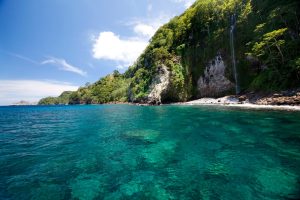
Back on the mainland, the wonders continue. Manuel Antonio National Park offers accessible opportunities to spot dolphins and coral reefs teeming with tropical fish, including parrotfish, angelfish, and butterflyfish, while the Catalina Islands are a prime location for swimming with manta rays. From the smallest, most colorful fish to the largest ocean giants, Costa Rica’s marine biodiversity is simply astounding.
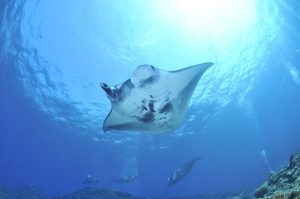
The Osa Peninsula, another remote and rugged wilderness area on Costa Rica’s Pacific Coast is home to the Corcovado National Park, a true jewel with amazing biodiversity.
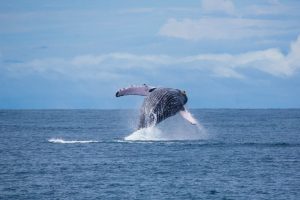
Encounters with sharks (like hammerheads), rays (manta rays, eagle rays), dolphins, and whales (humpbacks during their migration season) are possible, though sightings can be unpredictable. All seven species of sea turtle have been recorded in the waters around Corcovado.
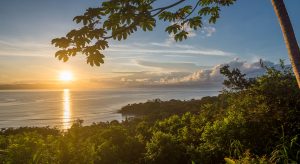
Also around Golfo Dulce, you will find an important breeding ground for humpback whales, offering excellent whale-watching opportunities during the season. Caño Island Biological Reserve is another exceptional place for snorkeling where you can spot a variety of reef fish, sharks, rays, and possibly even hammerheads.
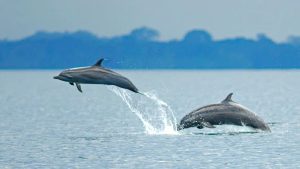
When exploring this underwater paradise, remember to be a respectful visitor. Keep a safe distance from marine life, avoid disturbing their natural behaviors, and choose eco-friendly tours and activities that minimize your impact.
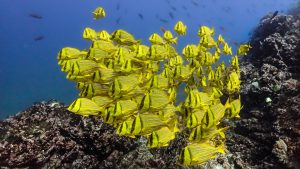
Costa Rica’s commitment to conservation ensures that its marine life will continue to flourish. Whether you’re an experienced diver seeking thrilling encounters or a nature lover simply curious about the ocean’s mysteries, Costa Rica promises an unforgettable journey into a world of underwater wonders.
Pages
- Taste of Tradition: Exploring San Jose’s Mercado Central.
- Diving Deep into Costa Rica’s Underwater Paradise
- Costa Rica: Your 2025 Adventure Awaits!
- Discover the Untouched Beauty of Drake Bay, Costa Rica
- Retiring in Costa Rica: A Paradise Found
- Top 5 Costa Rican Coffee Destinations
- A Journey Through Alajuela: Where History Meets Nature.
- Follow the Cacao Trail – Travel to the Caribbean Coast of Costa Rica
- A Morning Cup Of Nature: Treat Yourself Monteverde Style.
- A Greener Future For Costa Rica.
- Beyond the Postcard: Visiting Arenal Volcano and La Fortuna.
- Sustainable Travel to Costa Rica.
- Exploring Costa Rica During the Rainy Season.
- Unveiling the cheesy secrets of Santa Cruz, Turrialba.
- Hotel Fleur de Lys: Swiss hospitality in the heart of San Jose.
- Pura Vida on a Budget: How to Make it Worthwhile in Paradise.
- Conquering the Clouds: A Day Trip to Irazu Volcano National Park.
- Costa Rica: A Stage for the Breathtaking Acrobatics of Humpback Whales
- The Beginning of the Dry Season in Costa Rica.
- North Pacific beaches – Where to go and what to do.
- Local Food – Dishes you are most likely to try when visiting Costa Rica.
- Luxury Travel – Visit the Four Seasons Costa Rica
- Packing essentials for your trip to Costa Rica.
- Visit Cartago, a city of traditions and religion.
- La Paz Waterfall Gardens: The perfect family day trip!
- Coffee: A Costa Rican Adventure!
